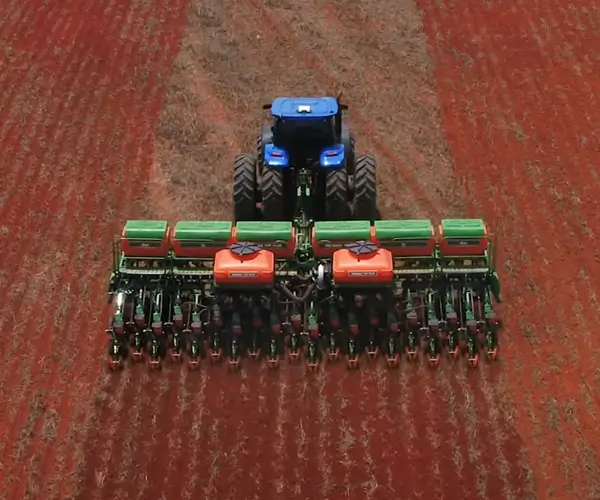Sure! Here's the first part of the article:
Introduction to Arduino and Servo Motors
In the world of robotics, automation, and DIY projects, controlling motors is a fundamental skill that opens up a world of possibilities. Among the various types of motors available, servo motors stand out as a versatile and reliable option, especially when precision control is required. The combination of Arduino and servo motors is a powerful one, allowing hobbyists, engineers, and makers to bring their ideas to life with ease.

What is a Servo Motor?
A servo motor is an actuator that allows precise control of angular position, velocity, and acceleration. Unlike regular DC motors, which rotate continuously, a servo motor can rotate to a specific angle and hold that position, which is why it’s often used in applications like robotic arms, remote-controlled vehicles, and camera gimbals.
The key advantage of servo motors is their ability to provide precise rotational control. They typically have a range of 0 to 180 degrees of rotation, though this range can vary depending on the specific servo. The motor's position is controlled using a control signal—usually a Pulse Width Modulation (PWM) signal—that determines how far the motor will rotate.
Why Use Arduino with a Servo Motor?
Arduino is a microcontroller platform that has gained immense popularity due to its simplicity and ease of use. It is perfect for beginners and professionals alike who want to experiment with electronics and automation. By combining an Arduino board with a servo motor, you can easily control the motor's position, speed, and behavior through simple programming.
The beauty of using Arduino to control a servo motor is that the code is relatively simple and easy to understand, making it perfect for prototyping and learning. With just a few lines of code, you can program your Arduino to move a servo motor to specific angles or even create complex automated systems with multiple motors.
Components Needed for Arduino Servo Motor Control
Before diving into the code, it’s essential to gather the necessary components for the project. Here is a list of the basic items you’ll need:
Arduino Board: An Arduino Uno or any compatible board will work fine.
Servo Motor: A standard servo motor (e.g., SG90, MG996R) will suffice for most beginner projects.
Jumper Wires: For connecting the servo motor to the Arduino.
Breadboard (Optional): Helps in organizing connections.
External Power Source (Optional): If you are using a high-power servo motor, it’s recommended to use an external power supply.
Wiring the Servo Motor to the Arduino
To begin with, you need to connect the servo motor to the Arduino board. Here’s a simple guide:
Servo Motor Control Pin (Signal Pin): Connect the control pin of the servo motor to one of the PWM-capable pins on the Arduino. For example, pin 9 is commonly used.
Servo Motor Power Pin: Connect the power pin (usually red) of the servo to the 5V pin on the Arduino.
Servo Motor Ground Pin: Connect the ground pin (usually black or brown) of the servo to the GND pin on the Arduino.
Once the connections are made, you’re ready to write your code!
Writing the Arduino Servo Motor Code
To control a servo motor using Arduino, you need to use the Servo library. This library provides functions that make it easy to move the servo to a specific angle. Let’s walk through the code for controlling a servo motor.
Here’s a basic code example to get you started:
#include // Include the Servo library
Servo myServo; // Create a servo object to control the servo motor
void setup() {
myServo.attach(9); // Pin 9 is connected to the servo's control wire
}
void loop() {
myServo.write(0); // Move the servo to 0 degrees
delay(1000); // Wait for 1 second
myServo.write(90); // Move the servo to 90 degrees
delay(1000); // Wait for 1 second
myServo.write(180); // Move the servo to 180 degrees
delay(1000); // Wait for 1 second
}
Code Explanation
#include : This line includes the Servo library, which provides the necessary functions to control a servo motor.
Servo myServo;: This creates a Servo object called myServo that will be used to control the servo motor.
myServo.attach(9);: This line tells Arduino to use pin 9 to control the servo. You can change the pin number if you are using a different pin.
myServo.write(angle);: This function is used to set the servo's position. The argument angle can be any value between 0 and 180, which represents the angle of rotation.
delay(1000);: This pauses the program for 1 second (1000 milliseconds) before moving the servo to the next position.
When you upload this code to your Arduino board, the servo motor will rotate to 0 degrees, wait for 1 second, then rotate to 90 degrees, wait again, and finally rotate to 180 degrees. The process will repeat indefinitely.
Advanced Control: Speed and Smooth Movement
If you want more control over how the servo motor moves, you can add gradual transitions rather than jumping instantly from one position to another. The Servo library offers a function called writeMicroseconds(), which allows for more precise control over the pulse width, giving you smoother movement.
Here’s an example of how to gradually move the servo between 0 and 180 degrees:
#include
Servo myServo;
void setup() {
myServo.attach(9);
}
void loop() {
for (int angle = 0; angle <= 180; angle++) {
myServo.write(angle);
delay(15); // Adjust delay for smoother movement
}
for (int angle = 180; angle >= 0; angle--) {
myServo.write(angle);
delay(15);
}
}
In this code, the servo moves from 0 to 180 degrees and back, with a slight delay of 15 milliseconds between each movement, resulting in a smoother transition. You can adjust the delay to control the speed of the movement.
Advanced Applications and Troubleshooting
Kpower has delivered professional drive system solutions to over 500 enterprise clients globally with products covering various fields such as Smart Home Systems, Automatic Electronics, Robotics, Precision Agriculture, Drones, and Industrial Automation.




































